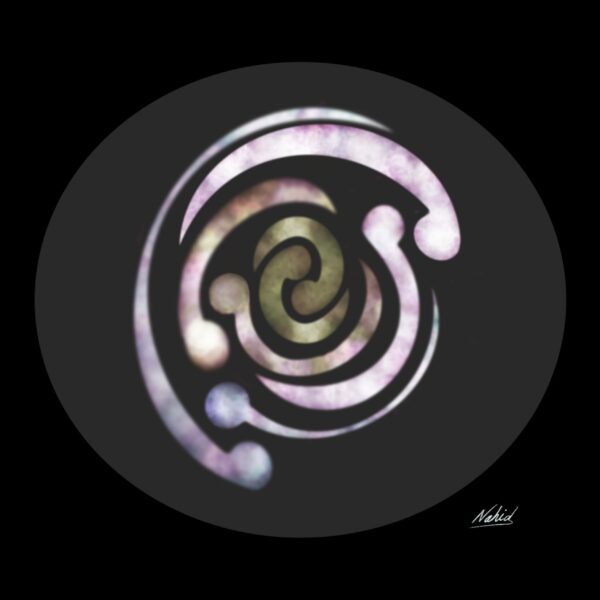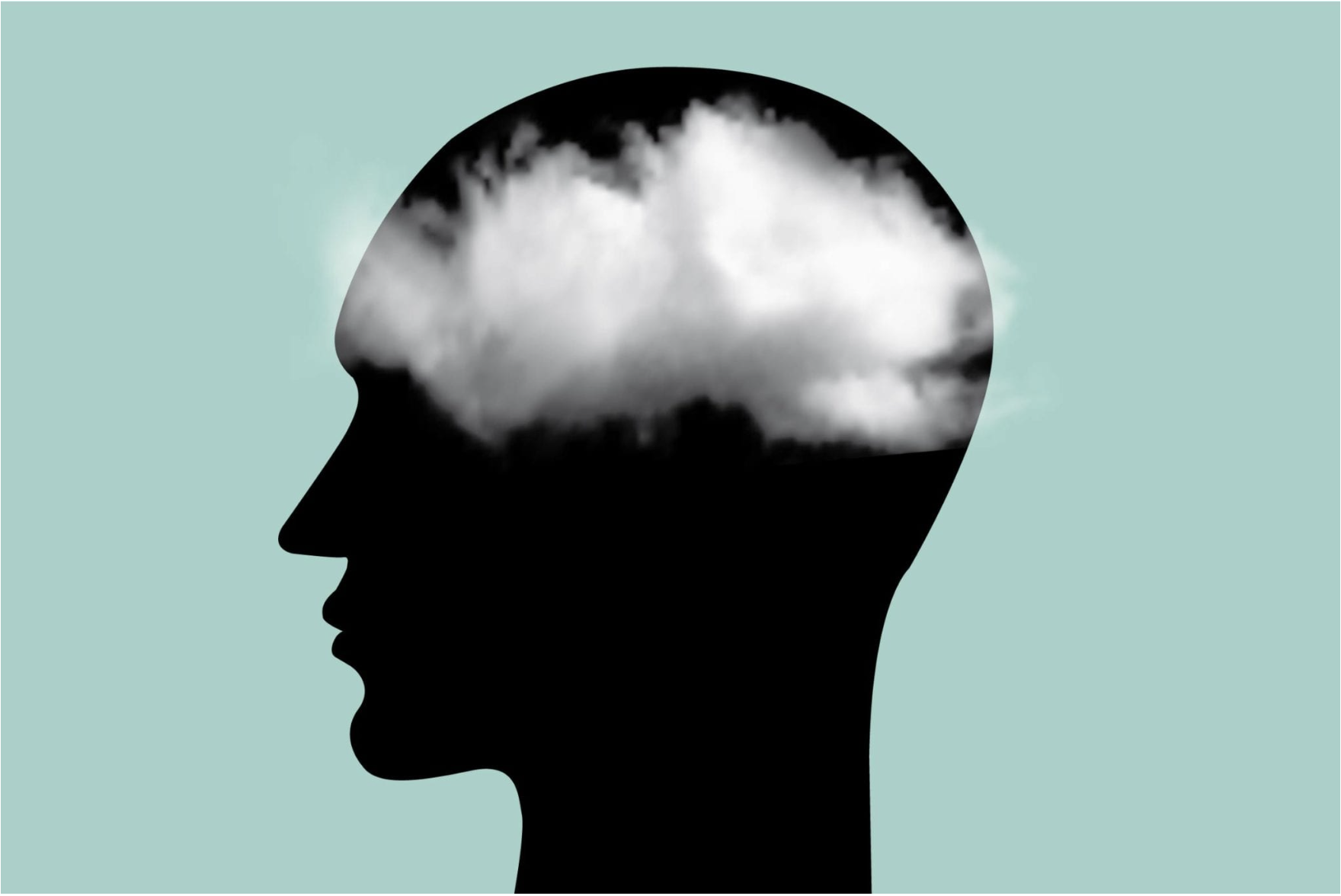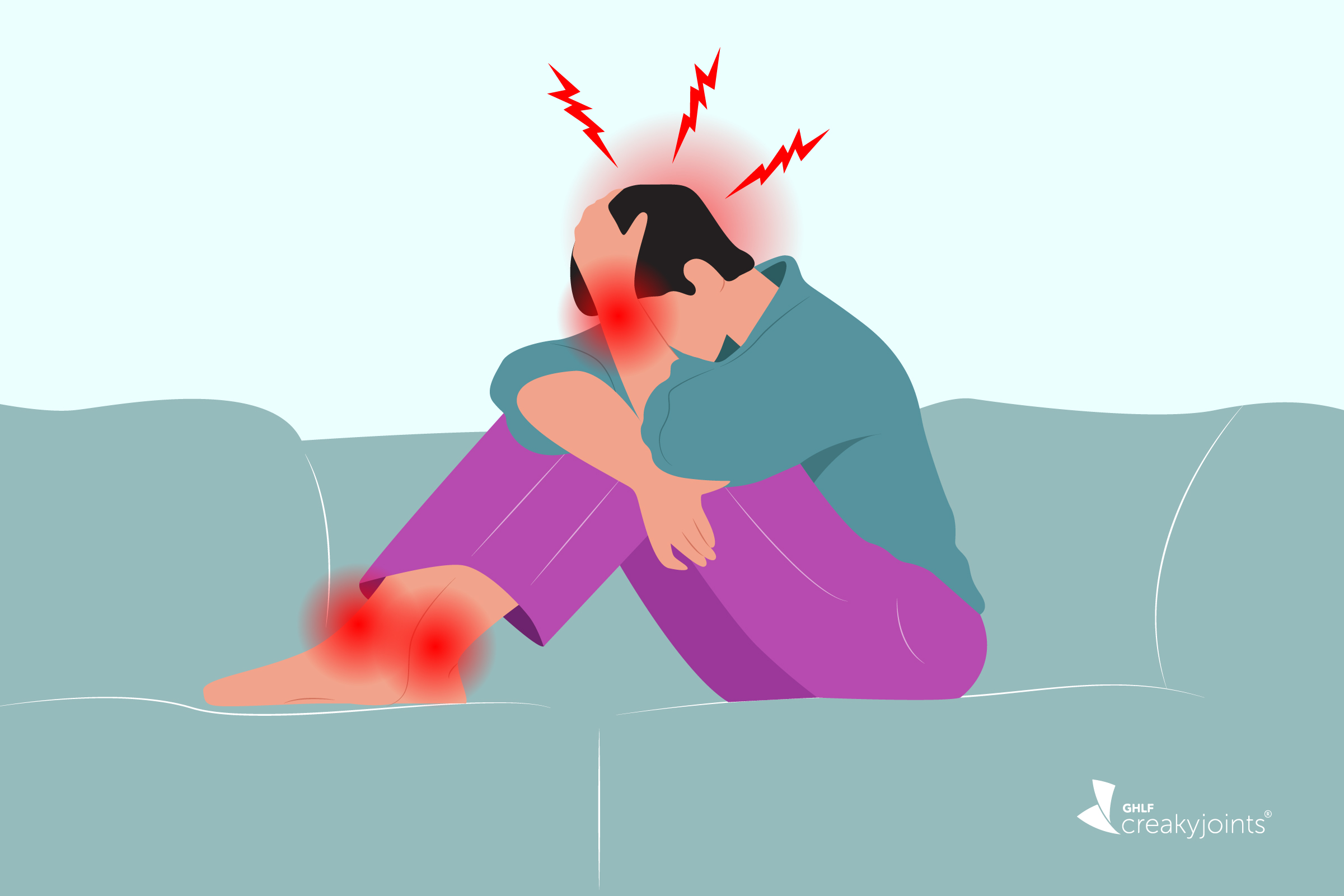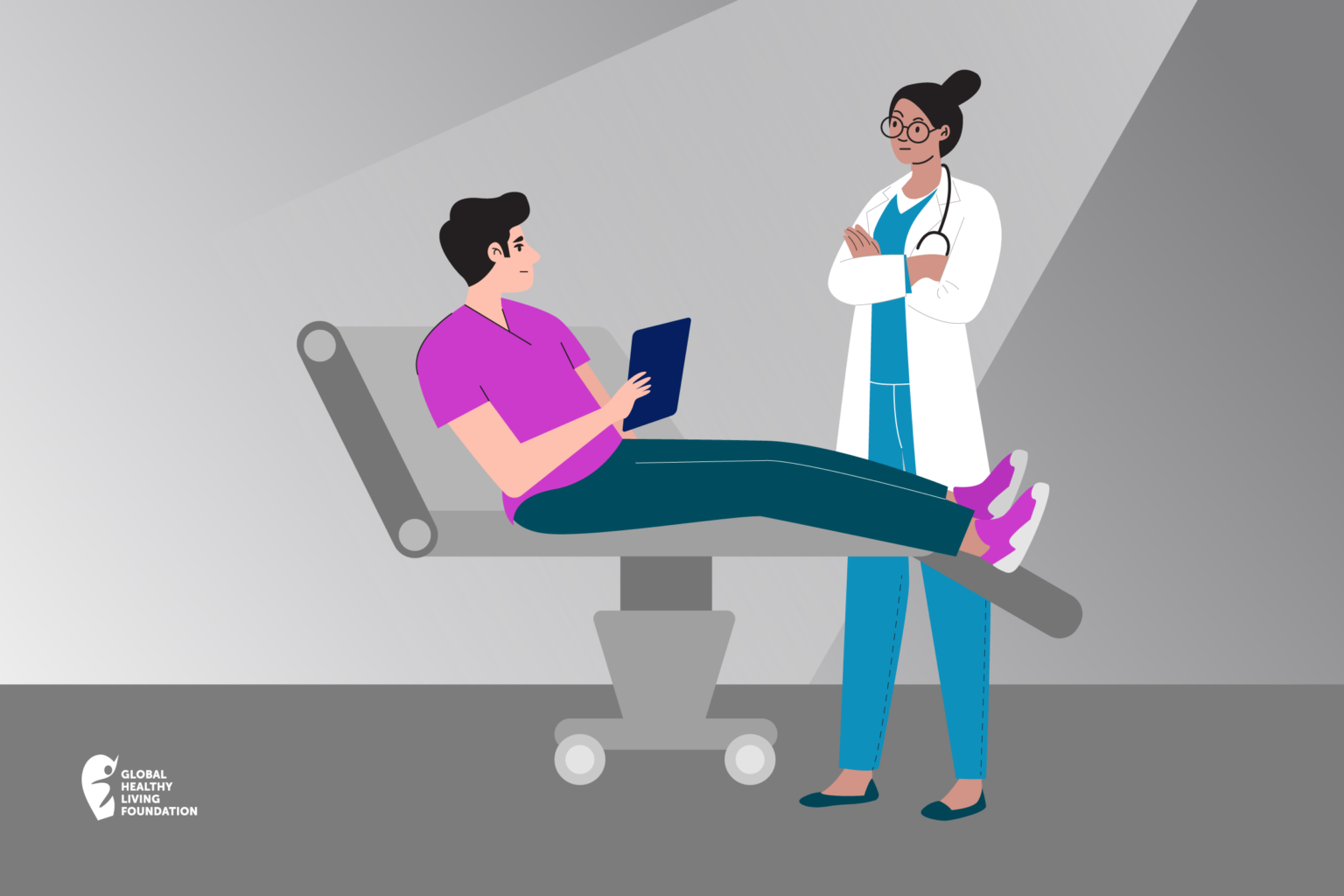"I am holding the trashcan on my lap when Chaka Khan starts to sing about female empowerment. I think: “
Sorry, Chaka, but it is not all in me today.”
Painting and Animating to Raise Migraine Awareness
Painting and Animating to Raise Migraine Awareness
June 8, 2022
Kate Baldus

Nahid Shukralla’s life has been deeply impacted by migraine. She got her first diagnosis when she was 18, but suffered from abdominal issues as a child. Looking back, she now thinks she had abdominal migraine, but in the 70s when she was growing up in Bahrain, her condition was not diagnosed. Nahid, who lives in Canada, experiences chronic migraine and has been seeing auras for more than 20 years.
In the past eight years, she has started to document her auras, first through paintings, and now with animation. Her art has transformed her relationship with her migraine.
Her Migraine Journey
Nahid was first diagnosed with migraine at 18 — and continued to experience episodic migraine until the age of 24. “When I was in medical school, I had a severe migraine,” recalls Nahid. “I was up the whole night throwing up with severe pain.” Still, the next day she passed her exam.
In the early 90s, after finishing her residency, her migraine changed again. “I was pregnant with my son and my migraine became really severe; I was admitted five times to the hospital,” says Nahid. “At one point, I couldn’t sleep for five nights because of continuous migraine.” The pain was so bad that Nahid was unable to put her head down. “One night my husband woke up and I was sitting [up]. I was just crying. He took me to the ER.”
Since she was pregnant, there were limited medical options but Benadryl injections relieved her pain, and she was able to leave the hospital.
Nahid’s migraine continued to get more severe, and eventually she had to stop working. In 2018, her doctor prescribed anti-CGRP (calcitonin gene-related peptide) medications, which are the first drugs approved by the Food and Drug Administration (FDA) designed specifically to prevent migraine attacks. CGRP is a protein that causes inflammation in the brain. “For the first time in years and years I had seven days without migraine. The medication worked wonders and I felt really my life changed. I was able to do more.”
After about a year, her medication stopped working as well and her migraine became more frequent. Her doctor switched her to another anti-CGRP. “It is not working as good but it is keeping me functional and keeping me away from emergency rooms. I haven’t visited an emergency room since 2018.”
The Visual Symptoms of Migraine
Nahid’s earliest memories of her aura symptoms were in her mid-30s. The first aura happened while she was driving on the highway. Despite having on her glasses, she suddenly couldn’t see with one eye. “It was so blurry. I sort of knocked on my glasses to see if the lens was there. Did I lose the lens? And the lens was there.”
An aura is a cluster of neurologic symptoms that evolve or change as your migraine worsens. This may include visual, sensory, speech, motor, or other central nervous symptoms, which can last for a few minutes to an hour.
A couple years later, she woke up in the middle of the night and couldn’t see out of one eye. She also felt like the bed was moving. “The whole thing went black and I thought maybe there was an earthquake and the lights went out.” She quickly regained her peripheral vision, but saw a black spot in the center, which got smaller until it vanished. “I called my doctor — it was 5 a.m.” With her history, the doctor said the scotoma (partial vision) was most likely part of her migraine.
Later in her life, Nahid started Botox treatment and began noticing shapes and colors when she closed her eyes — often in early morning or in the middle of the night — before a migraine attack. “I was seeing these blue things in my eyes. The moving shapes or colors…all of a sudden turned blue. The aura would often wake her from sleep. She also began seeing lights.
Using Art to Raise Awareness
In 2015, Nahid started sketching her auras using colored pencils and a pad. A year later, she began to paint them. She had a big canvas, and every time she saw an aura, she would create it on the canvas. One of the first auras she painted is called the Hexa-Aura and it started with a flame.
But the paintings didn’t capture what she wanted to express. “I realized that just painting auras didn’t [work],” says Nahid. “Because they are moving shapes and colors. So how can I express that for other people to see?” She wanted to both capture her aura and raise awareness about migraine so others could see what she was seeing.
In 2020, she began to learn digital painting. Now she draws and animates her auras using her iPad. Nahid is intentional about how she creates an aura: “My paintings have a black background and an oval shape,” she explains. “The oval dark center is my visual field when my eyes are closed and I try to be as accurate as possible where the aura happened — which quarter of the visual field, whether it’s right or center or middle or up or down, and how it moves. And the colors that I saw.”
Nahid tries to visually memorize what she sees, and if she’s not in too much pain, she will make a note of what it looks like, how it moves and choose the color from her color wheel. She also names the aura based on what it looks like. The Treasure Box aura looked like a box, opening and closing with lights coming out. Naming it helps her remember and later paint the aura.
“In postdrome, rather than being miserable and sitting on the couch and not having energy to do anything, grabbing my iPad and my Apple pencil, and giving my energy to drawing and animating my aura, it really eases my pain,” she says. “I feel like the day wasn’t wasted; I’m doing something.”
Nahid’s Tips for Living with Migraine
Seek help. “Go and see a doctor so that you have the right diagnosis. There are more and more advances in migraine management. New medications are available and more and more new advances, so you don’t have to suffer through it. Maybe one of these medications can help you.”
Educate yourself. “Read about migraine. And educate the people around you — your family, your friends, your co-workers, your boss at work — so that everyone is aware about migraine. It’s not just a headache.”
Practice self-care. “When you have migraine, you have to rest; you need to rewire the brain. You need to be in a dark room or sleep. Take care of yourself.” Read more about how to manage migraine with lifestyle changes.
Explore non-medical devices. “There are also non-medical devices that are available, like Cefaly and Nerivio that can help people with migraine. It reduces the pain of the migraine.”
Lean on loved ones. “Help and support from family and friends are very important.”
Sharing Art and Showing Migraine
Nahid posts her paintings and animations on Instagram @migraineart_bynahid. Her posts allow her to connect with others and share her art.
She reflects, “It’s satisfying to know that I’m doing something. I suffered from this disease for so long that it robbed me from so much enjoyment in life, but I am enjoying it in this other way — defeating the disease, raising awareness, enjoying my paintings and showing to others what we see and what we suffer through migraine.”
Download the Migraine Patient Guidelines
Vetted by both medical experts and people living with migraine disease, our Migraine Patient Guidelines offer clear, trusted information to make sense of all the treatment choices for migraine disease. Learn about the latest treatment options, get support for coping with migraine stigma at work and in your personal relationships, and learn more about how to be a migraine patient advocate. Learn more here.
SUBSCRIBE TO GHLF
RELATED POST AND PAGES
_
Was this article helpful?
YesNo






